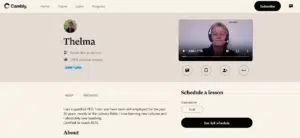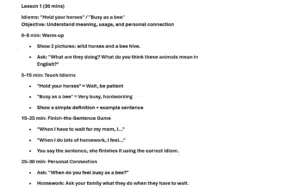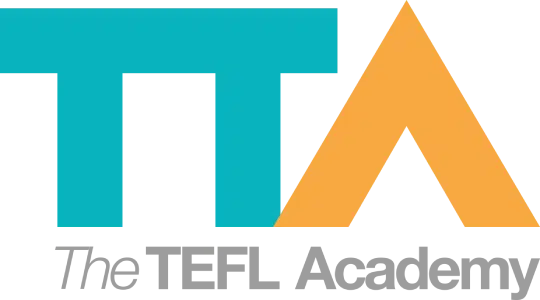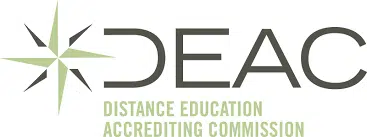How Do 1-on-1 And Group Classes Compare In Online Teaching?
Join a global community of over 200,000 TEFL teachers working throughout the world! Enrol me!
Teaching English online comes with so many options, like whether to teach 1-on-1 lessons, group classes or both! Both come with their upsides and challenges, and getting a feel for each can help you pick the right fit.
Thelma Bunting is a TEFL Academy alumna and experienced online English teacher who tutors on multiple online teaching platforms, including Cambly. She shares her insights to help us understand what to expect when signing up to teach individual versus group classes.
But first, let’s introduce Thelma:

Thelma: I’ve been teaching ESL online for the last four years and currently tutor around 50 lessons a week. Most of these students are regular students, some of whom I’ve been working with for the full four years I have been tutoring online.
Which do you enjoy teaching more: 1-on-1 or group classes?
I definitely enjoy tutoring 1-on-1 more, as it allows me to, firstly, get to know my students better, and secondly, offer more meaningful assistance in their English learning journey.
Group classes can, however, be tricky, especially if your chosen platform doesn’t screen the students’ levels effectively. This means you may end up with an A2 and B2 student in the same class.
Read more: 5 Effective Strategies For Teaching Mixed Ability EFL Classes
I found that often you have students of different levels in each class. For these classes, it’s more challenging to monitor progress, fully identify individual students’ needs, and address them going forward.
But not impossible!
The advantage would be that you are often given material to work with the students and don’t have to plan anything yourself.
With the platform I’m working on, we aren’t expected to prepare any materials. However, I must confess that I do create some materials myself, which takes a little time.
Read: 7 Reasons You Should Make Your Own EFL Worksheets
On the other hand, this isn’t entirely necessary, as there are so many resources online which are free to use in addition to the lessons provided by the platform.

How does your lesson planning and delivery change between the two formats?
With group classes, the material is often supplied. Tutors are expected to work with a specific set of material in their classes. So there isn’t an enormous amount of planning that goes into that.
But if you decide to become an independent ESL tutor, you’ll probably be working with the same groups each time and would have to create all of your materials.
I believe there is a distinct difference in the delivery of a group lesson as opposed to 1-on-1.
In 1-on-1 classes, you can address recurring issues in grammar on the spot, which I found I wasn’t able to do in group classes.
As such, I felt like group classes were more a case of ‘teaching’ than ‘tutoring’.
Below is a sample of one of Thelma’s lesson plans.

Student needs in 1-on-1 versus group classes
Thelma notes that students’ needs don’t necessarily change between 1-on-1 and group classes. They still want to improve their English, stay engaged, and feel supported.
I think their needs are similar. Unfortunately, this creates a higher expectation on the tutor in group classes, unless you find a platform where you are teaching the same group of students in each class.
Consistently teaching the same group of students makes it easier for the tutor to get to know students, personalise their learning and track their progress.
How does the teacher-student relationship differ between the two formats?
As you can provide dedicated attention to an individual, as opposed to several students at one time, I believe that there’s a closer relationship between the teacher and students in the 1-on-1 format. You learn about their personal lives and family, and get to know their personality.
What strategies help you keep students engaged in a group setting?
Breaking the class up into teaching, group or pair work, and individual speaking sections is helpful. You can pair a quieter student with a chattier one, for instance, and when they do individual speaking, encourage question asking from other group members. Perhaps ask if everyone agrees or disagrees, creating a debate of forms.
What are some of the biggest challenges you’ve faced in each setting?
Challenges with groups
The biggest challenge I faced with the group setting was feeling like I was starting over in each class.
I felt that I was not seeing progress in any one student, as the students always varied.
Challenges 1-on-1
With 1-on-1 lessons, I would say that the biggest obstacles are that sometimes students will take their lessons in noisy places.
And sometimes their personal lives can overflow into your lessons, which can be tricky.
I once consoled—yes, consoled—a South Korean lady, who had argued with her boss while travelling home on the train. She cried the entire time. But she did it all in her best English!
We say that’s a win!
Another obstacle is that because you tend to work with the same students, when a student doesn’t show signs of improvement over time despite all your efforts, this can be very frustrating.

What tech tools or platforms work better for each format?
The tools and platforms you use depend a lot on the format of the class—whether you’re teaching 1-on-1, small groups, large groups, or children.
1-on-1 lessons
Zoom, Skype, or Google Meet work well due to their simplicity and reliability. Interactive tools like Kahoot! or Canva add variety and keep learners engaged.
Group lessons
Microsoft Teams, Zoom and ClassIn support screen sharing, breakout rooms, and chat, which are useful for group interactions.
Children’s classes
Kids enjoy visual aids and interaction.
Platforms like ClassDojo and ManyCam—or even Zoom, with the use of visual props, virtual backgrounds or fun filters—can enhance student engagement.

Props like teddy bears can be very effective for Young Learners.
Some companies require tutors to use their proprietary teaching platforms, as in Thelma’s case, which often include built-in tools like whiteboards, chat functions, and lesson libraries.
Some platforms allow you to tutor on external video platforms, such as Zoom, and others insist that you tutor their students on their platform.
The most important factor to take into account is a good internet connection.
On one platform I use, tutors have to do a tech test every morning when logging onto the platform. You must have a stable internet connection.
Concerning teaching resources, most group lessons come with ready-made materials for you to work with. It’s more of a teaching environment than a tutoring one.
Many platforms provide a large selection of materials you can use to tutor 1-on-1. Also, there are tons of teaching resources available on the internet, the bulk of which are free to use.
I don’t generally teach children. However, if I happen to end up having a class with a child, I have a selection of teddy bears which are useful to help engage children. And they will often bring theirs to class too, which is useful when a child is not outgoing.
They sometimes prefer their teddy to ‘talk’ to mine, which gets them speaking.
Read: 5 Must-Have Classroom Props For Teaching English Online
Do you earn more teaching 1-on-1 or group classes?
Commonly, group lessons pay more than 1-to-1, but pay varies so much in the ESL field right now.
Some platforms might pay only $3 an hour for group classes, with detailed feedback required after each lesson, while others pay around $10-$15 an hour for both group and 1-on-1 lessons.
Unfortunately, it’s difficult to predict which format you would earn more in. This would depend on many factors, including:
- platform expectations around feedback,
- how much effort you put into preparing your own material, or
- whether you’re using pre-made online resources, etc.
Read more: How Much Money Can I Really Earn Teaching English Online?
Which format do you think is more effective for learning English?
I am pro the 1-on-1 format, so naturally I would say that I think that’s the more effective method. However, there are a couple of factors that can be taken into account where this would change.
For instance, the age of the student.
I think perhaps Younger Learners might benefit more from group lessons as they pick up some confidence from their classroom peers, which I believe might enrich their learning experience.
Whereas adults benefit from the 1-on-1 format as they generally have a greater ability to concentrate for longer periods.
Read: 6 Differences Between Teaching Adults And Young Learners

How do you think different teacher personalities align with 1-on-1 or group teaching formats?
You need to be a more energetic person to work with group lessons. As you can imagine, you’re focusing on a group, listening for errors from several students, and carrying out your lesson plan.
Even though I’m an outgoing and energetic person, I’m more content with the 1-on-1 format.
What advice would you give someone deciding between 1-on-1 and group teaching online?
I would advise tutors deciding between the two to consider a few things:
Do they want to build relationships with their students, watch them grow, and celebrate their personal or professional achievements as they improve their English?
Or do they prefer to keep some distance from their students and maintain a greater level of privacy?
If it’s the latter, I recommend they opt for teaching group lessons. When teaching group lessons, you often don’t see the same students more than once.
Also, if you’re keen on teaching children instead of adults, I recommend the group lesson format.
Tutoring Young Learners 1-on-1 can be quite challenging, but teaching a lively class full of children is loads of fun!
Accreditation & Quality Assurance
The TEFL Academy was the world’s first TEFL course provider to receive official recognition from government regulated awarding bodies in both the USA and UK. This means when you graduate you’ll hold a globally recognised Level 3 (120hr) Certificate or Level 5 (168hr) Diploma, meaning you can find work anywhere and apply for jobs immediately.
 United States
US
United States
US












